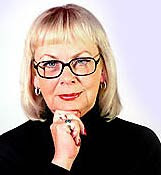Rising Again
Another misconception is that mania is euphoric, happy and overly-optimistic. In fact, mania can be expressed in anger, rage, and extremely self-destructive agitation. As the mania peaks individuals can put themselves in jeopardy by doing acts that can be seen as totally logical in this mind-set but end up creating stress for family and self in the aftermath of a manic episode. Driving recklessly often ends up with accidents as one thinks one is invincible. Spending with no idea or realization that one is building up bills that one will not be able to handle. Taking on projects with grandiose ideas that often beyond the scope of one’s abilities may often create failure after failure when the spiral begins a downward curve.
In some cases people with mood disorders may also have delusions. In this case there will be hallucinations that can be aural or visual. Paranoia can become an extreme also when one has feelings that seem to suggest that others propose a threat.
One of the most difficult aspects of the disorder to deal with is rumination. In this state the mind gets caught up with an idea and it just keeps going around in circles unable to detach self from the thought. The rushing mind is receiving to much data and starts grasping on an idea to try and quiet the mind by going round and round in circles about one idea. It could be either positive or negative.
Often these periods of mood shifts can be over a long period of time. Then there can be fast shifting of the polarization of moods even as quickly as fifteen minutes to half an hour. Lots of times there are periods of mood stabilization that reflects the normal mood shifts of the average person. But always underlying the psyche of the person who suffers from bi-polar disorder is the hope that the highs will return and the fear that the lows will return and knowing that both are real expectations throughout life.
Mood disorders are highly prevalent in creative people. In fact, research indicates that the link between mood disorders and creative arts are higher than in any other profession.
More than half , or 46 to 77% of writers, painters, and composers encountered periods of serious depression, at least twice the rate observed in persons in other fields. Mania appeared most often in actors, poets, architects, and nonfiction writers, with lifetime rates ranging from 11 to 17 percent. , whereas it is prevalent in only 1% of the general population
http://www.lorenbennett.org/creativity.htm



0 Comments:
Post a Comment
<< Home